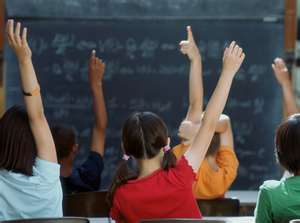24th February
In his final post on approaches to technology in the classroom, Will looks at excuses and the real damage they are doing.
This post will explore the teachers that use excuses to avoid or reduce technology use in their classroom. There are countless excuses that teachers may put forward but these are just a few that I wish to highlight. These are the ones that frustrate me most and/or are so easy to overcome.
"In preparing my lesson, the technology works perfectly. When implemented with students something always goes wrong."
Yes, technology breaks down. We have all experienced a network error, Wi-Fi problems, connectivity issues, blue screens and error codes. Firstly, it is possible to think it ‘always’ breaks down because you keep recalling that one bad experience and fear trying it again. When technology does fail, a Plan B is necessary. However, I argue that a Plan B should always be in place for any lesson (not to mention a Plan C through to Plan Z). Have you ever had a non-tech lesson finish too early, lack discussion or not be able to print your precious worksheets because the photocopier is broken? These too require a fast thinking (calm) teacher to carry on with the lesson. In my experience with technology problems in the classroom, often it takes just a couple of minutes to troubleshoot and resolve the problem. In upper primary this can often be a chance for students to offer solutions and work on their problem solving and collaboration skills. After all, they are going to encounter ‘error codes’ in their real working lives.
"I have always taught this way; it works so there is no need to make it more complicated."
This is all well and good for you but think of the invaluable experiences and skills the children are missing out on. This is often the view of teachers who have been teaching longer than I have been alive. I do not dispute that they can bring immense experience and knowledge of teaching to a school but if they are reluctant to grow as a teacher into today’s technologies then students will fall behind. Moreover, it is important to keep in mind that students are likely to be exposed to technology in their lives outside the classroom. To deprive them of this familiar tool will leave students feeling confused.
"Students get easily distracted on iPads and computers."
In any classroom, especially at the start of the year you sit down with the students and establish classroom rules. These are mutually agreed upon and throughout the year you, as the teacher, enforce these rules. If a student runs across the classroom with a ‘no running inside’ rule, they know it is likely they will get told off. The same goes for technology. It is up to the class (teacher and students) to set ground rules for technology use and if these are broken then there will be consequences. If general class distraction is a common theme in technology lessons maybe it is time to look are the quality of the lesson. Is it engaging students? Is there clear expectations and learning intentions set for the session? Students can’t just be handed a computer and be told to learn. Technology or no technology, a teacher still has the same role to play – to facilitate learning and maintain a safe, supportive, engaging and fun learning environment.
To summarise, excuses like these are ultimately limiting children reaching their full potential and their exposure to the technological world. This is the final post of 3 which looked at different approaches to a 21st century classroom. Ensure you approach technology with a positive and open mindset - I urge you all to constantly experiment with new ways of teaching and push the boundaries of technology use in the classroom.
- Will




